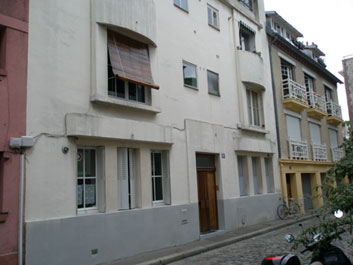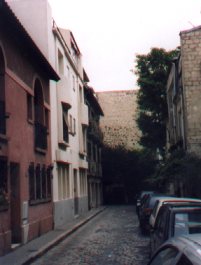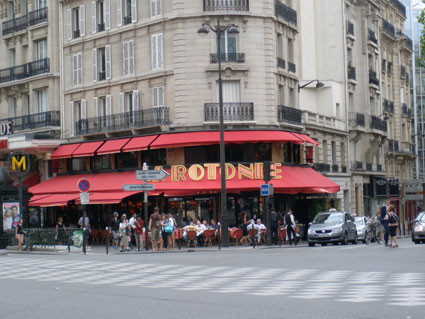 Café
de la Rotonde
Café
de la RotondeDuring the 1920s, the area around Montparnasse was home to a great deal of the intellectual energy of the expatriate movement. Now, the character of the neighborhood has changed. The French allowed an exception to their eight-story limit on buildings, and the Tour Montparnasse, at 55 stories the tallest building in Europe, was built. Like the new railway station there, the Gare Montparnasse, it is without character (at best), extremely ugly to speak more frankly. Although there are still many theaters and good brasseries in the neighborhood, there are also lots of sex shops and many panhandlers. If you needed to leave your credit card at home for the last walk, for today's you should bring a lot of spare change (or not, depending on your philosophy).
Begin at the métro stop Vavin, just west of the tour and gare. From there walk west (away from the tower) along the boulevard du Montparnasse. After a couple of blocks on opposite sides of the street, you will see two famous cafés: the Café de la Rotonde, where Edna St. Vincent Millay often dined during 1922 (going so far as to use the café as the return address on some of her letters) and the Café du Dôme, where Sinclair Lewis often dined.
 Café
de la Rotonde
Café
de la Rotonde
Café du Dôme 
A little farther down the street at number 159, Edna St. Vincent Millay lived with her mother during 1922--just a three-minute walk from her favorite café.
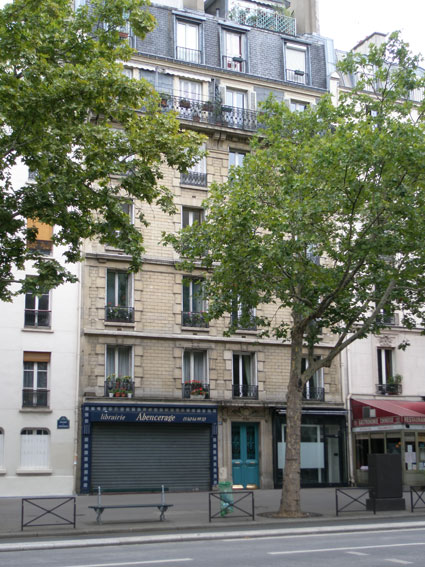
Across the street at number 166, Katherine Anne Porter resided.
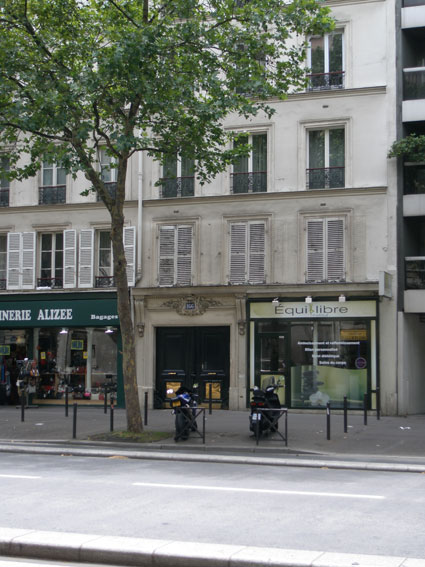
166, bd du Montparnasse
At the end of the block, 171, bd du Montparnasse is the still-beautiful restaurant La Closerie des Lilas.
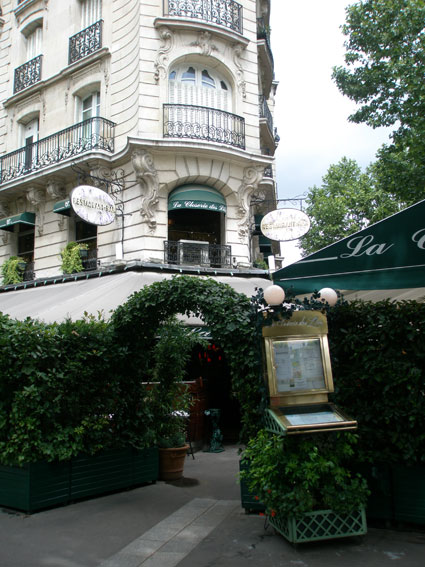
This is the most important of all the brasseries on the street. Here Hemingway and Dos Passos passed time together; Fitzgerald gave Hemingway the manuscript of The Great Gatsby; and Hemingway read his unkind parody of Sherwood Anderson's Dark Laughter to Dos Passos. Perhaps most significantly, Hemingway wrote much of The Sun Also Rises wwhile sitting at this cafe.
The other stop on today's walk is somewhat farther away, but don't be tempted by the Port-Royal R.E.R. (express metro) station just in front of you. Instead, turn right onto the avenue Denfert-Rochereau, follow it a long block to the station Denfert-Rochereau. You'll pass the Observatoire de Paris on your left and the entrance to the Catacombs (but we're saving the dead for tomorrow's visit). On the other side of the station, turn left down the avenue René Coty until it crosses the rue de la Tombe-Issoire. Angle right on Tombe-Issoire. At number 100, you'll see the Impasse Seurat, a lovely, short cul-de-sac with houses built in 1926 for artists and sculptors. Many famous artists lived on this street, including Soutine and Georges Seurat, for whom it's named. Walk to the end of it. At number 18, Henry Miller lived and wrote from 1931 to 1939. He even named an imprint of the Obelisk Press the Villa Seurat series and published three books under that imprint: one by Miller himself, one by Anais Nin, and one by Lawrence Durrell.
Two views of Miller's apartment
